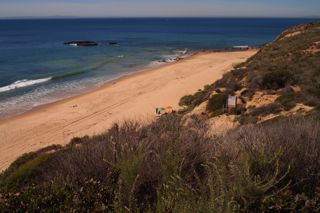
We got there at 1 p.m. and the +0.8 low tide was before 11 a.m. Even so, we saw a quite a bit in the mid to
splash zones.
| 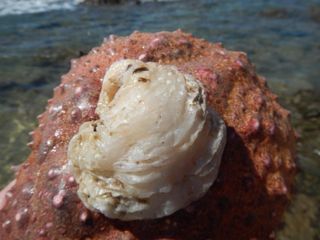
the top shell of a jewel box clam (Chamidae),
Chama exogyra (reversed chama; formerly Pseudochama exogyra)
| 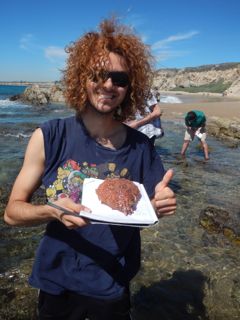
a perhaps molted sheep crab (Loxorhynchus grandis) carapace
|
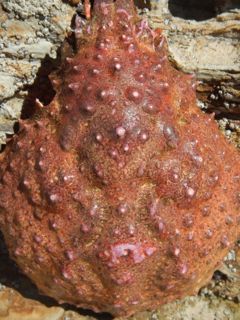
-
| 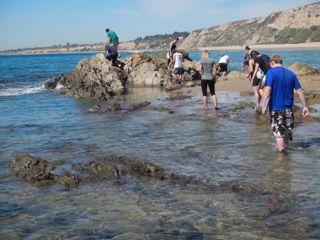
-
| 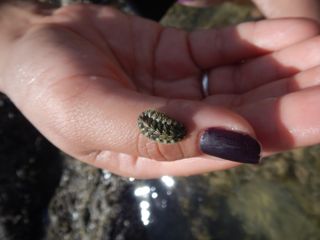
-
|
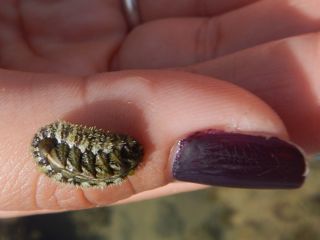
Nuttallina fluxa juvenile (southern spiny chiton) -- note in this
uneroded example the girdle has spines not setae as in the sometimes confused mossy chiton, Mopalia muscusa. N. fluxa is also much narrower.
| 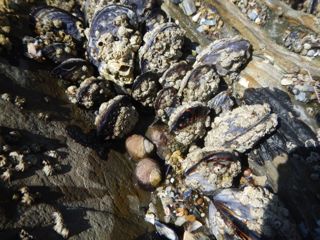
Mytilus californianus (California mussel)
was common in the mid-intertidal zone.
| 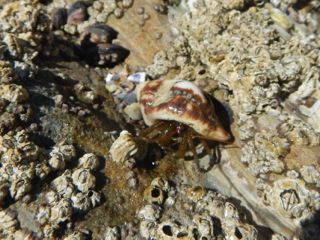
-
|
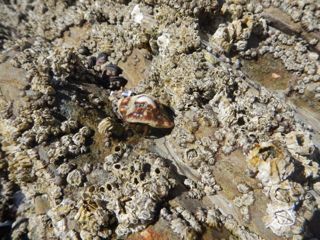
-
| 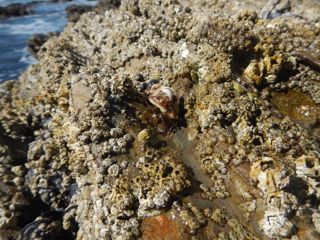
-
| 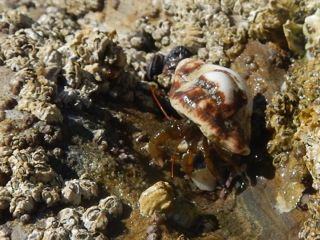
-
|
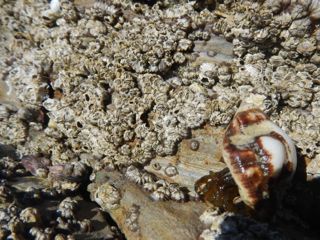
-
| 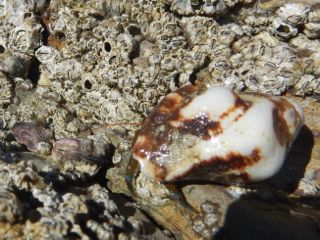
-
| 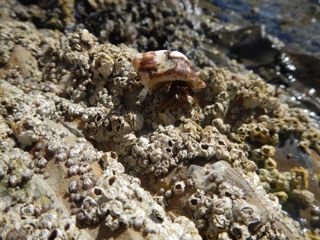
-
|
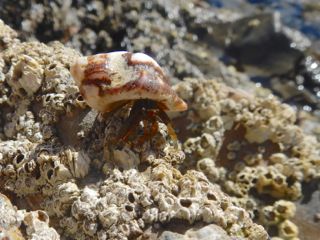
-
| 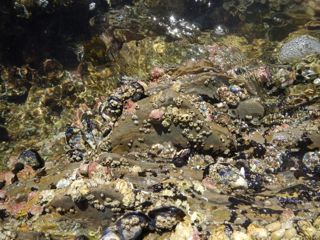
-
| 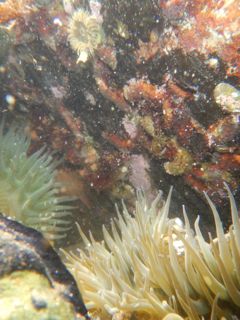
-
|
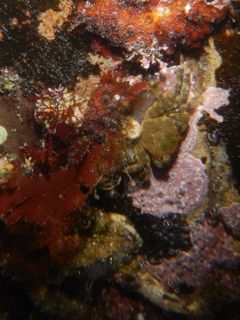
-
| 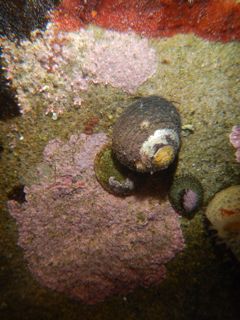
Underwater, under a ledge, left to right, Lottia limatula
(file limpet), Chlorostoma funebralis (black teguline snail), and a limpet we refer to as Lottia sp. B --
one of the undescribed species we are still in the process of describing on this coast, in this case related to the more
southern L. strigatella.
| 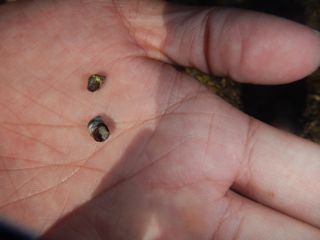
-
|
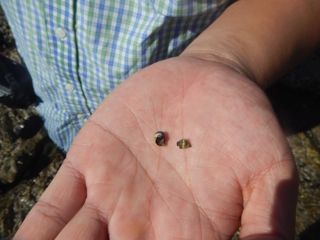
On the left is Littorina keenae, an extremely common periwinkle snail in southern California,
especially in the splash zone, and on the right is the relatively rarer (in southern California)
L. scutulata, which is usually lower in the intertidal than L. keenae
| 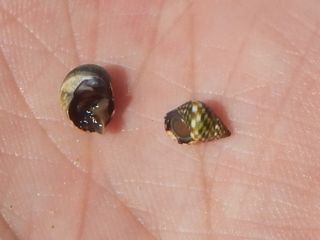
L. keenae was formerly called L. planaxis and this name
refers the rose-colored lip around the aperature that approximately on the plane through the axis of coiling. This is lacking in L. scutulata.
| 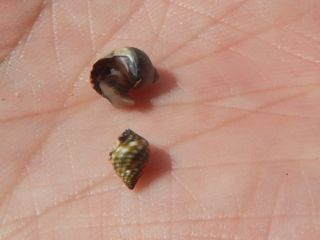
-
|
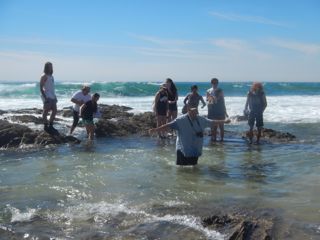
-
| 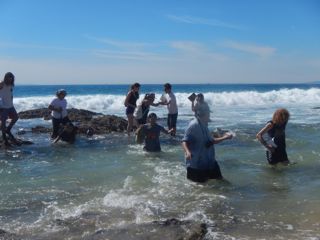
-
| 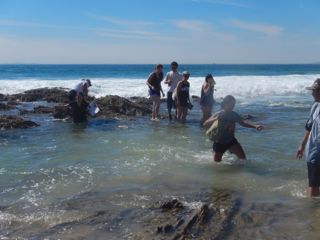
-
|
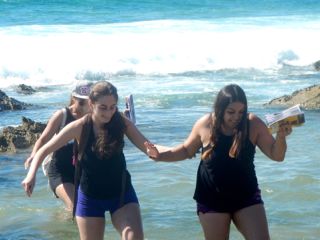
-
| 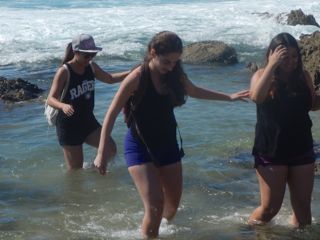
-
| 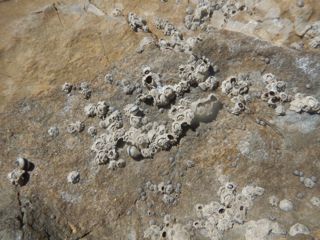
Upper high zone has acorn barnacles, Balanus glandula and Chthamalus fissus
(and maybe also C. dalli)
as well as lots of the periwinkle snail, Littorina keenae. Chthamalus spp. are much smaller and brownish, for example, in the 20 or so
near the center bottom of this image. We looked at their distinctive tergal plate differences with a hand lens.
|
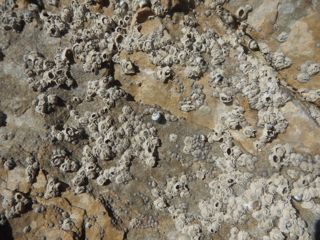
-
| 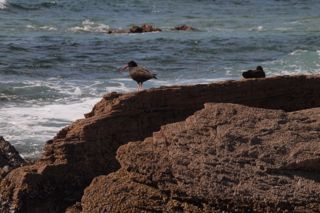
black oystercatchers (Haematopus bachmani)
| 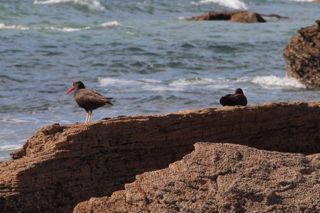
-
|
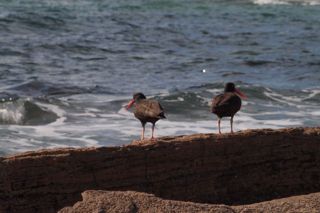
-
| 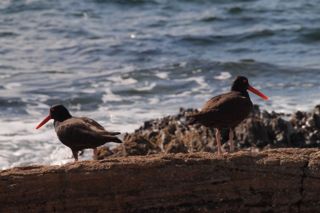
-
| 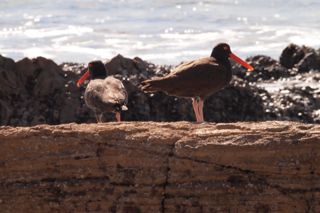
-
|
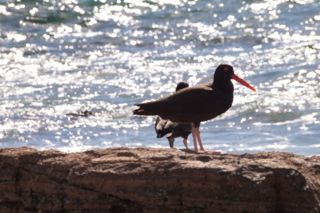
-
| 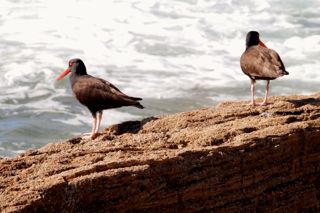
-
| 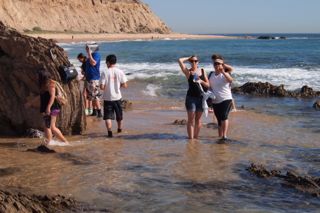
-
|
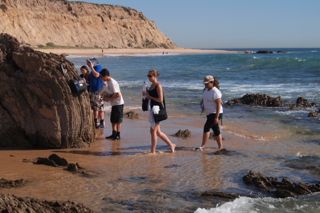
-
| 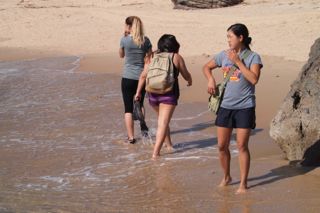
-
| 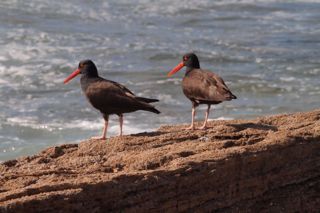
-
|
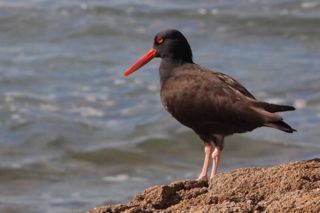
-
| 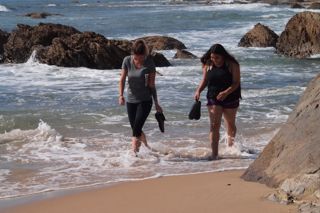
-
| 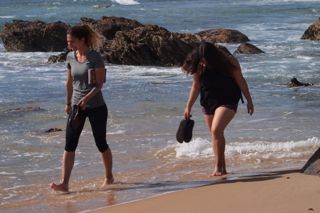
-
|
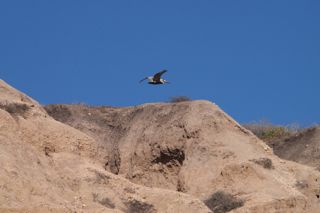
-
| 
brown pelican
| 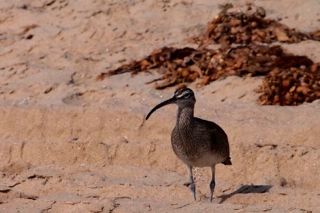
A long-billed curlew has a long downward-turning bill.
|
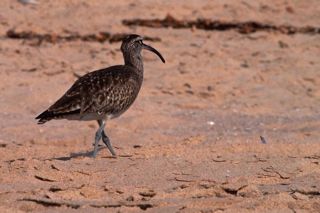
-
| 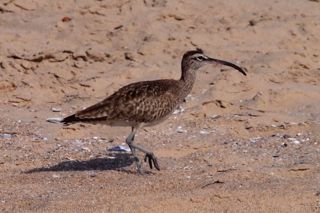
-
| 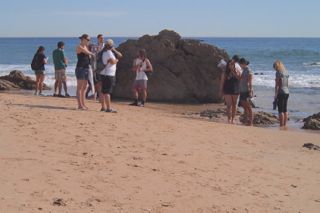
-
|
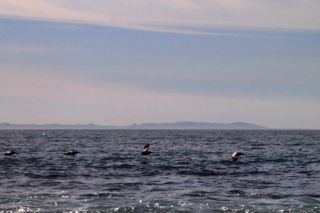
-
| 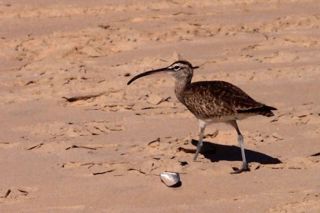
-
| 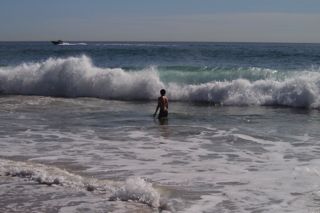
-
|
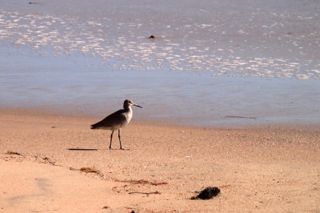
A willet is perhaps the shorebird most commonly seen (or not seen
by students who don't yet notice birds) on visits to the rocky intertidal. It has a medium-length straight bill with white regions under its wings that
are easily seen when it flies.
| 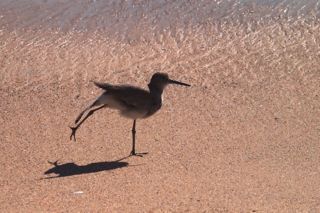
-
| 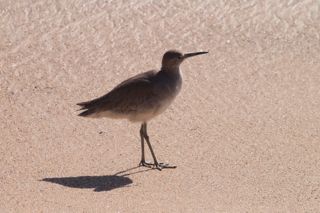
-
|
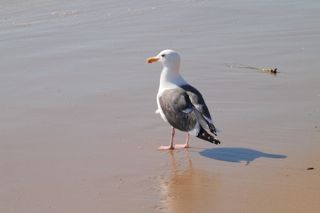
-
| 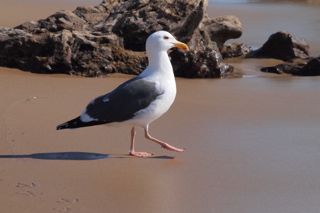
A a western gull (Larus occidentalis) has pink feet (not yellow-greenish as in a California gull)
and dark solid grey on its back (lighter grey on a herring gull).
| 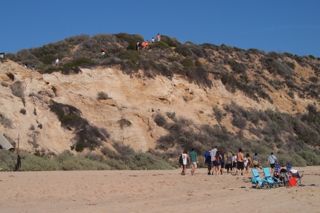
-
|
 Under Construction!
Under Construction! Under Construction!
Under Construction!